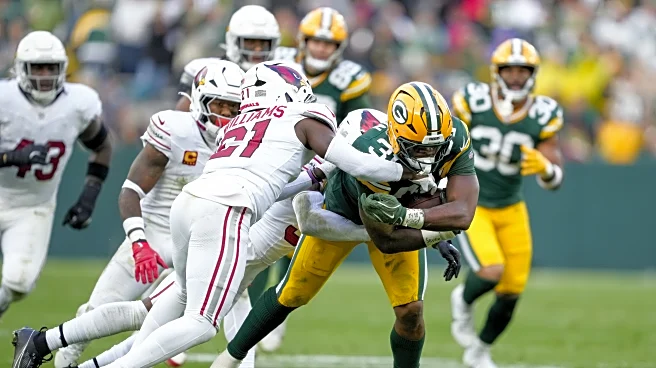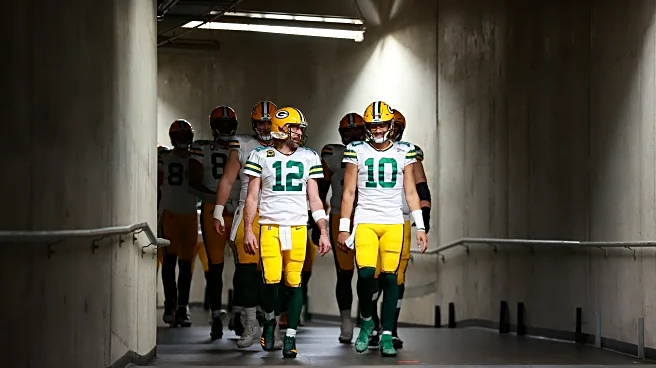What's Happening?
Aaron Rodgers, the quarterback for the Green Bay Packers, made headlines with a remarkable Hail Mary pass attempt during a recent NFL game. The pass, although incomplete, traveled an impressive 69.8 yards in the air, marking it as the longest recorded
pass attempt since at least 2017. This feat was tracked by Next Gen Stats, highlighting Rodgers's exceptional arm strength and ability to execute long-distance throws. Despite the pass not resulting in a touchdown, it has been noted for its historical significance in the realm of professional football.
Why It's Important?
The significance of Aaron Rodgers's Hail Mary attempt extends beyond the immediate game context, showcasing the evolving capabilities of NFL athletes and the technological advancements in sports analytics. Such feats of athleticism can influence team strategies, player training, and fan engagement. For the NFL, moments like these enhance the league's appeal, potentially increasing viewership and fan loyalty. Additionally, Rodgers's performance underscores the importance of quarterback skills in shaping game outcomes, which can impact team dynamics and player marketability.
What's Next?
While the immediate outcome of the game was not altered by the pass, the record-setting attempt may influence future game strategies and player evaluations. Teams may look to leverage similar long-distance plays in critical game situations. For Aaron Rodgers, this achievement could further solidify his reputation as one of the league's top quarterbacks, potentially affecting contract negotiations and endorsement opportunities. Fans and analysts will likely continue to discuss the implications of such plays on the sport's future.














